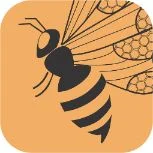Comprehensive Detailed Guide about Oregano Honey
Honey is undoubtedly God's food! It is ubiquitous and is created by little honey bees. It sweetens your morning cup of tea/coffee, functions as a natural cough suppressant, soothes your mind, heals your wounds, and accomplishes a lot more than anyone expected. Indeed, the allure of honey never fades. Oregano honey is a variety available in the market known for its unique characteristics.
What is OREGANO honey?
We've all heard of oregano. It goes on our pizza and adds a unique flavor. Oregano is more than just a herb used in Mediterranean cooking. Recent research has shown that oregano has therapeutic benefits, and the oil derived from it can help treat a variety of ailments. The nectar from the abundant oregano blooms is collected by bees, who then change it into another fresh and delicious honey: oregano honey.
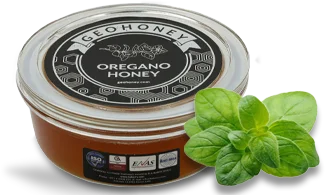

About Oregano
The name OREGANO is derived from the Greek words "oros" and "ganos," which signify mountain and joy, respectively. The word oregano means "mountain delight". This fragrant plant was revered as a symbol of happiness by the ancient Greeks and Romans. Brides and grooms of the time are usually seen in drawings being crowned with an oregano laurel, a typical rite. Bees pollinate the blooms, which are hermaphrodites (they have both male and female parts). From May to July, the plant flowers.
Despite its attractive aroma, oregano has a pronounced bitterness that limits its use in cooking. The flavor is powerful and rather unpleasant, and its culinary applicability as a topping in most cuisines is restricted. However, the advent of oregano honey is revolutionizing both honey and oregano by-product markets.
How IS OREGANO HONEY MADE?
Worker bees (which account for at least 98 percent of the bee colony population) are the ones who generate honey through a complicated process. A large number of worker bees are required; no one honey bee can deliver honey without the help of other bees in the colony.
Worker bees take the nectar from Oregano blossoms and store it in their subsequent unique stomach (designed specifically for storing honey) as they fly back to the hive. When they return to the hive, they distribute the nectar to the "chewing" honey bees, primarily the bees in the hive. Chewing honey bees collect nectar and chew it for about 30 minutes.
During the process, enzymes in their lips convert nectar into honey and water-based compounds. Following the chewing process, worker bees distribute the chemical into honeycombs for the water to dissipate, making the honey less watery.
The evaporation of water is enhanced as distinct honey bees fan it with their wings. When honey production is complete, honey bees begin working on waxing the cells of honeycombs to secure the honey.
Honey bees manufacture and store their products such as honey, propolis, royal jelly, and so on. They can survive by eating honey during the winter and other times when pollen is scarce.
As beekeepers steal a percentage of the honey stocked during the harvesting process, honey bees will generate an equal amount of honey to compensate for the honey taken from people. They will carry on with their lives as usual.
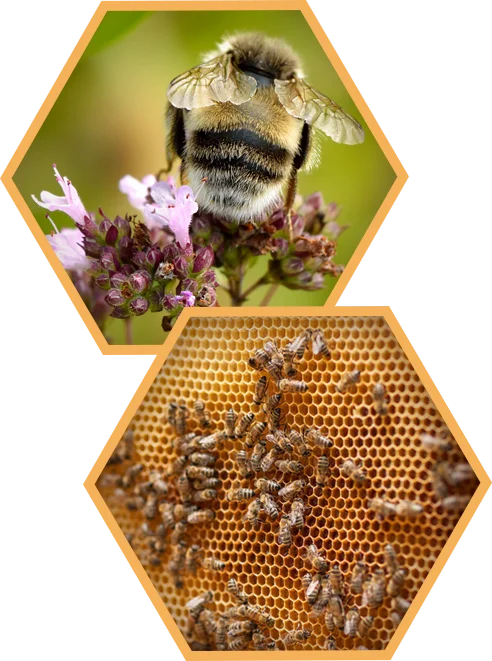

WHAT ARE THE BENEFITS OF OREGANO HONEY?
Oregano is a common herb in many cuisines around the world.
It has a robust flavor and adds warmth to foods, as well as a delicate sweetness.
It is available fresh, dried, or as an oil, all of which are thought to offer substantial health benefits.
Oregano has certain vital elements, although being used in modest doses. One teaspoon of dried oregano has about 8% of your everyday vitamin K requirements.
Studies have revealed some of its outstanding potential benefits, ranging from assisting in the fight against infection to lowering inflammation.
-
Rich in Antioxidants
Oregano is high in antioxidants, which are molecules that help the body battle damage caused by damaging free radicals.
Free radical accumulation has been linked to chronic diseases such as cancer and heart disease.
Oregano and oregano oil are strong in antioxidants, according to several test-tube experiments.
Carvacrol and thymol, two antioxidants included in oregano essential oil, can help prevent cell damage caused by free radicals.
Oregano, when combined with other high-antioxidant meals such as fruits and vegetables, may give a potent dose of antioxidants that may help enhance your health.
-
May Help Fight Bacteria
Certain chemicals in oregano have powerful antimicrobial effects.
In one test-tube investigation, oregano essential oil inhibited the growth of Escherichia coli and Pseudomonas aeruginosa, two bacterium species that can cause infection.
Another test-tube investigation discovered that oregano was effective against 23 different bacteria species.
In addition, a test-tube investigation examined the antibacterial activity of essential oils of oregano, sage, and thyme. Oregano, along with thyme, was one of the most effective essential oils against germs.
The current research is restricted to test-tube investigations using concentrated doses of this herb. As a result, more research is required to evaluate how these findings may influence humans.
-
Could Have Anti-Cancer Properties
Oregano has a lot of antioxidants. These compounds not only can counteract free radical damage but may also aid in cancer prevention.
According to several in vitro research, oregano and its compounds may aid in the destruction of cancer cells.
In one test-tube investigation, oregano extract was applied to human colon cancer cells, which slowed their growth and helped them die.
Another test-tube study found that carvacrol, another component of oregano, inhibited the growth and spread of colon cancer cells.
Keep in mind, however, that these were test-tube research involving large doses of the herb and its constituents. To evaluate its effects, human studies at usual doses are required.
-
May Help Reduce Viral Infection
In addition to preventing germs, some research suggests that oregano and its constituents may help protect against some viruses.
Carvacrol and thymol, two chemicals found in oregano, have been linked to antiviral activity.
Carvacrol inactivated norovirus, a viral infection that causes diarrhea, nausea, and stomach pain, in one test-tube trial within one hour of treatment.
In another test-tube trial, thymol and carvacrol were reported to inactivate 90 percent of the herpes simplex virus in approximately one hour.
While these findings are encouraging, more research into how oregano may affect viral infections in humans is required.
-
Could Decrease Inflammation
Inflammation is a normal immunological reaction to illness or injury. Chronic inflammation, on the other hand, is thought to lead to the development of diseases such as heart disease, diabetes, and autoimmune problems.
Oregano contains a high concentration of antioxidants, which can aid to neutralise free radicals and reducing inflammation.
It also contains chemicals that have been demonstrated to have anti-inflammatory activities, such as carvacrol. In one animal investigation, carvacrol reduced edema in mouse paws by up to 57%.
In another animal study, a combination of thyme and oregano essential oils reduced the frequency of inflammatory markers in mice with colitis or an inflamed colon.
Remember that this research looked at the effects of oregano and its constituents in extremely high concentrations.
More research is needed to know how a normal amount affects inflammation in humans.
-
Easy to Add to Your Diet
Though you may think of oregano as a pizza and pasta garnish, this versatile herb may be utilized in a variety of ways.
To make a nutrient-dense salad, toss whole oregano leaves with other greens, or sprinkle the leaves on chili, soups, or stews.
It can also be used to make fresh pesto or salad dressing, season ¬meat meals, and enhance the flavor of handmade sauces.
Oregano is available fresh, dried, or as an oil, making it a breeze to incorporate into your diet.
What ARE THE RISKS & PRECAUTIONS OF USING Oregano HONEY?
Although many individuals dislike the flavor of Oregano honey, it is safe for most adults to eat. It can be ingested or applied to the skin topically. When used in moderation, it has no negative consequences. To be on the safe side, pregnant and lactating women are advised to avoid consuming Oregano honey.
- It is not suggested to give Oregano honey to newborns under the age of one year because it can cause baby botulism. Botulism poisoning is a serious risk at this age, but not for older children and adults because their immune systems have matured.
- Diabetics should also avoid drinking big amounts of honey because it might induce a fast jump in blood glucose levels.
- People who are allergic to pollen particles should avoid consuming Oregano honey because it can cause severe allergies.
.webp)
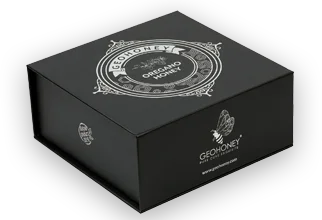
TAKEAWAY
Oregano honey is a unique honey varietal with a distinct flavor. Oregano honey is a wonderful alternative for individuals who wish to sample new flavors and reap the many health advantages of natural products. Geohoney introduces a new line of honey products for its clients so that they may enjoy eating 100 percent organic, wild, and pure honey that is packed with tremendous advantages at a reasonable price.
BUY OUR OREGANO HONEY
What’s the buzz, Join the hive !
SIGN UP TO OUR NEWSLETTER
Be the first to know about our hot deals, new arrivals.


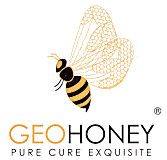



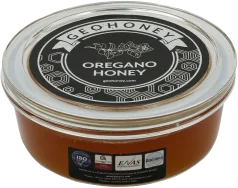


 Pay By Cards
Pay By Cards
 PayPal
PayPal
 Stripe
Stripe
 Other Payment Methods
Other Payment Methods







